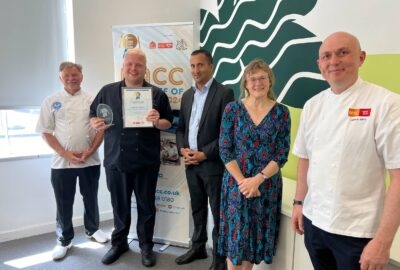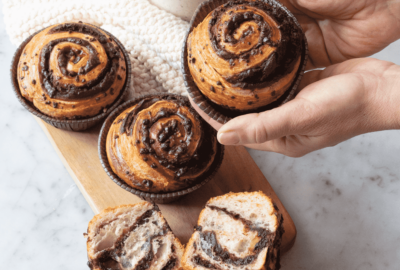As we work our way through the roadmap to recovery from the COVID-19 pandemic, consumers are keen to get out and about, booking holidays and short breaks across the UK and Ireland. Following the announcement of hotels and accommodation reopening, bookings have been coming in thick and fast, but how are operators coping with balancing new regulations and changes in consumer behaviour while offering guests a relaxing break away from it all?
Despite the restrictions of lockdown, many guests are still nervous about communal dining and buffet style meals, leading to a huge shift to in-room dining. The more time a guest spends in their room, the more we need to focus on that space to make it a positive experience. Small changes such as enhancing refreshments available in guest rooms will help to minimise the stress on room service staff so they can prioritise food orders, but you can also go one step further and personalise in-room refreshments, as Rebecca Hill, Owner of Galtres Lodge and Forest Restaurant explains:
“I have always wanted to make these bespoke, in fact I want to tailor the whole hotel room to the guests’ preferences by adding a section to our confirmation email or pre-arrival email with an optional questionnaire which would ask questions like: are you a warm person or a cold person, are you a tea or coffee drinker, do you like sweet or savoury? If you don’t want to answer then you wouldn’t have to, but if you do, then we could have your room set to a warmer temperature, with extra tea-bags and a savoury treat instead of the usual home-made biscuit that we provide – depending on your answers.”
It may not always be possible to offer an extensive menu for in-room dining, but for premises with unusable communal spaces such as a lounge, library or conservatory, converting them into private dining spaces could help to encourage guests out of their rooms while delivering a more intimate, exclusive dining experience.
“Avoiding communal dining spaces doesn’t have to mean missing out on a luxury experience, as the food itself, regardless of setting, should remain central. Providing a guided tour of local delicacies through successive courses can immerse guests in the personal culinary journey they desire.” Comments Tim Hall, Executive Chef at Burgh Island Hotel.
Brew-tiful Breakfasts, But No Buffet
It is doubtful that the much-loved breakfast buffet has gone for good, however many hotels and B&B’s are moving away from the buffet and turning towards grab-and-go or table service breakfast options and they may not look back. Historically, buffets generate a lot of wastage in food and staff time. Providing a positive alternative could help hoteliers make some long-term cost savings, however there is no doubt that to pull this off, serving the most important meal of the day will require extra thought.
Research by Délifrance has reported a significant shift towards individually wrapped products, stating that for viennoiserie, almost half (49%) of people surveyed would now opt for individually wrapped pastries and 12% want to see a wrapped selection of mini pastries. This change in consumer behaviour has resulted in an increase in demand of 400% for their wrapped pastry range.
This trend has been echoed by the Weetabix Food Company who have seen sales of their individually wrapped cereal packs increase in the past few months. “We know that as the hospitality sector adapts to the new post-COVID world, they will need to find new and innovative ways to offer their consumers healthy and nutritious food that is easy to prepare, convenient and with hygienic packaging”, says David Bone, Foodservice Channel Manager, Weetabix. “Our range of portion packs, and grab and go products can help caterers build customer confidence and satisfy their requirements.”
Maximise all Opportunities
Encouraging guests to spend more time on premise in bars, cafés and restaurants will increase the overall average spend and
build sales from key profit centres. There are a number of initiatives to take advantage of, depending on your target market; offering a picnic lunch for day trippers, a lunchtime meal deal for guests on a budget, afternoon tea or bottomless brunches will be sure to attract a cross section of guests and increase footfall.
A Stay To Remember
As we have already seen over the past 8 months, there are many ways of enhancing dining areas and outdoor spaces. In winter we saw igloos, tents and log-cabins but now the weather is warmer, converting gardens, patios and woodland into enchanting dining rooms, using planters, fairy lights, fire pits and candles is a much simpler affair. Making indoor or outdoor spaces as special as possible, supporting them with marketing and beautiful insta-worthy photography will encourage guests to dine
on site rather than go out for the evening.
Interview with HOSPA
We took some time out with Jane Pendlebury, CEO of HOSPA, the Hospitality Professionals Association, a not-for-profit educational organisation formed to bring together professionals involved in all things commercial within the UK’s hospitality industry, for further insight into how the sector is preparing for Summer.
Have in-room dining requests increased
as a result of COVID?
In-room dining has increased hugely during the pandemic. In fact, it’s the one area where many hotels have seen significant revenue improvements. Data from Hotstats, a hotel benchmarking and analysis provider, which presented during our annual HOSPACE conference in November, found that room service within European hotels had risen 24% YOY, while in the Middle East it was
a massive 76%.
Which outdoor dining events are proving popular for hotels this year?
Hotels are seeking to use any outdoor space they can – from pub car parks to backyards; dining areas have been fashioned in all sorts of places, with hoteliers and other operators getting ever more creative.
What advice would you give to hoteliers/accommodation owners to maximise trade this Summer?
It’s completely dependent on location. Coastal and rural destinations have been struggling to cope with the level of demand since the Government signposted reopening. City and town centres, however, are not finding it so easy. But, with some clever promotion and the packaging of experiences, many are now seeing better uptake in room bookings.


